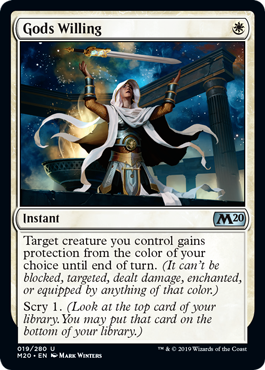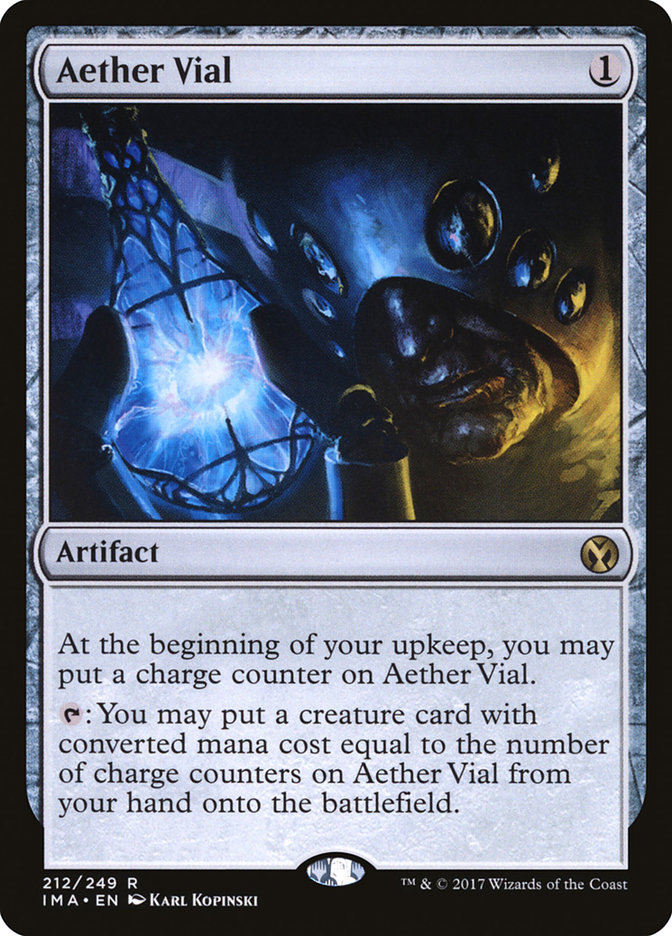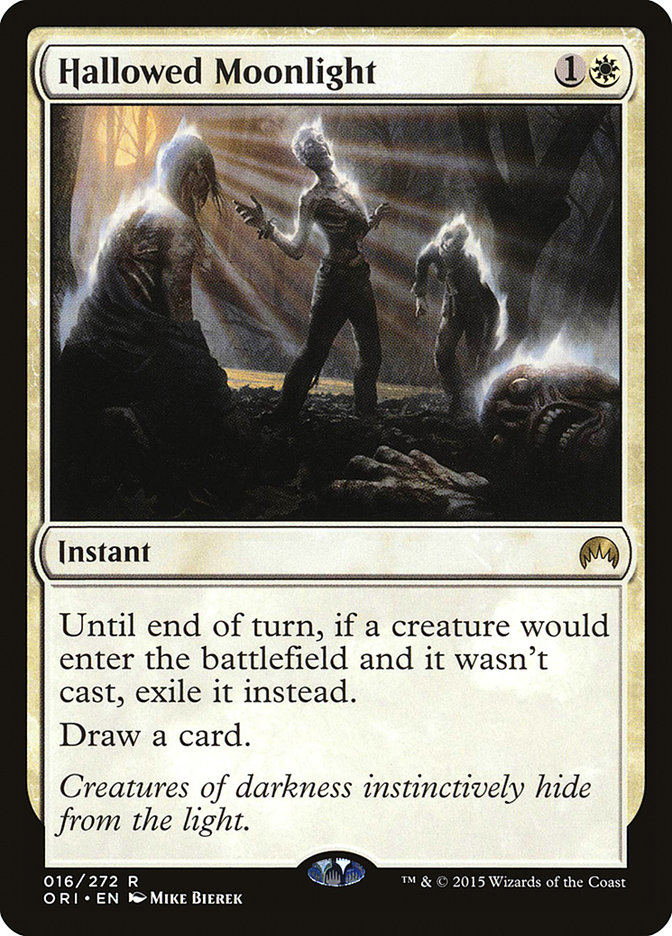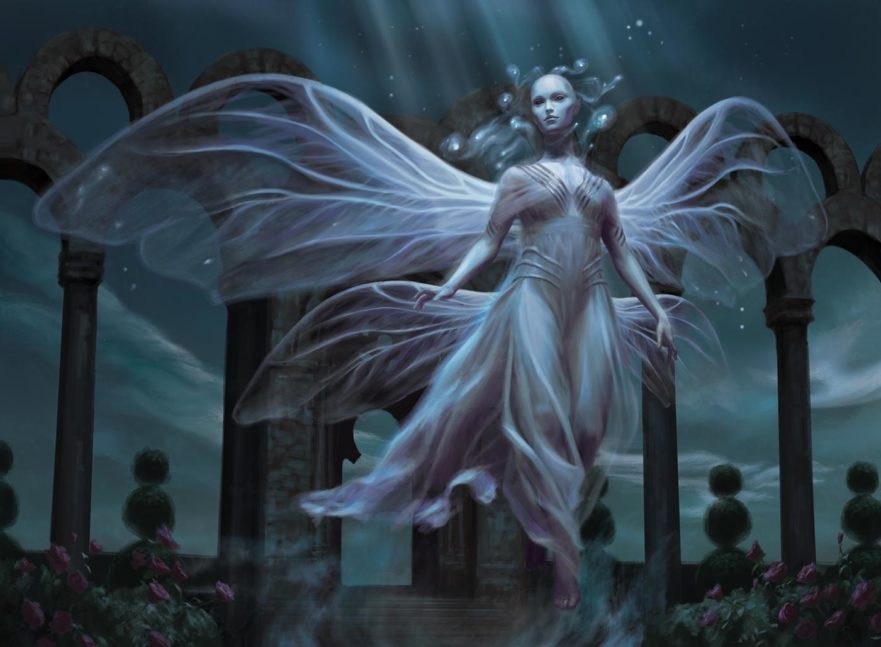There are many reasons why Magic, more than any of its competitors and imitators, has stood the test of time for more than a quarter-century. But the fundamental balance and choice provided through the five-color system stands out as by far the most important. The color pie allows players self-expression, a sense of identity. It creates variation between top decks and gave a sense of continuity to Magic sets long before the Gatewatch or even the Weatherlight crew.
But recently, some parts of the community have become increasingly vocal in their dissatisfaction with the color pie. White is out of whack, they argue. It’s the least popular color of Magic in online polls, consistently the weakest part of card cycles, and only rarely climbs to the top of Constructed or Limited play. White is arguably even worse in Commander, which is a problem given the continuing popularity of that format.
Whether you play white yourself or not, most of us could agree that Magic is healthiest when all five colors feel distinct and powerful. So, as the world’s white mages march into the new year, what boons can Wizards grant them to ensure the color make a comeback in 2020?
HINT: Oko is probably not healthy in any color.
WAIT, WHAT FLAVOR IS THIS PIE?

Considering the number of cards printed since 1993 and the amount of design space Magic has covered, I’m impressed at how Wizards have kept the color pie mostly consistent. Players have an amazingly coherent idea of what effects “belong” in a color, and that’s great!
But like many early design choices in Magic, that division of power looks a little off-target with our modern understanding of the game.
Which effects are in white’s slice of the color pie? Going wide with small creatures, the famous “white weenie” strategy. Team-wide buffs or “anthems” to incentivize that go-wide plan. Gaining life. Wrath of God and its many descendants. Removal that can deal with any permanent, especially Oblivion Ring effects which are tied to an enchantment. Equipment, and to a lesser degree auras. “Blinking” and “flickering”: exiling permanents and returning them to the battlefield again. Restrictive taxing and hate cards, tapping opposing permanents, and defensive effects which can save your creatures from removal.
I get a smile when I think about most of these effects, associated as they are with cards I’ve played for years. But when you look closely, few of them actually provide a path to victory, and quite a few are essentially uncompetitive.

Lifegain is historically a trap for novice players, only able to sustain a competitive strategy when used as a trigger for other, more powerful effects. Enchantment-based removal is often weaker than other kinds, as you set yourself up to get blown out by Teferi, Time Raveler or Knight of Autumn later. It’s also usually sorcery-speed in a world where competitive cards are increasingly defined by their impactful first turn of play. Tapping effects are similar, usually requiring constant mana investment to replicate the effect of proper removal and giving opponents a chance to surprise you by removing your tapper and “freeing” their threat.
Many of the remaining effects in white’s slice of the pie fall prey to the same criticism: they are “support” cards that do little by themselves, putting pressure on the white mage to draw and resolve the right mix of both card types. Cards like Daybreak Coronet, Cathars’ Crusade or Gods Willing often seem incredibly powerful on their face, but still barely see play. Why rely on drawing and resolving a specific sequence of two cards, when other colors would simply play two threats that are strong independently? When you consider that white is defined by its terrible card selection as much as anything else, this inconsistency becomes enough to disqualify all but the most pushed effects from competitive play. And that’s before you even consider the two-for-one potential of removal in response to auras, equipping, flickering and the like.
WHITE: WHAT CAN’T IT DO?!

ANSWER: Instant speed creature removal. Any instant speed interaction that isn’t strictly defensive. Creatures with power greater than 3. Card draw. Card selection. Evasion other than flying. Hand disruption. Mana acceleration.
The list of things that white “doesn’t get” is shorter, but covers far more effects which have become valuable to success in Magic. In particular, being able to play flexibly at instant speed and see extra cards are vital to increasing the range of decisions available to the player and give them agency in the game. Restricting white from accessing these effects doesn’t just make white decks weak — it makes them less fun and skill-rewarding. It makes them feel less like playing Magic. No wonder this color isn’t popular.
So white’s ability to play reactively is limited, but it’s not very good at playing proactive, linear strategies, either. The fundamental concept of “fairness” means white gets very few ways to “cheat” on resources — no ramp, few free spells. Combine this with a lack of card selection to find combo pieces and white is left with “go-wide” as its only real way to accrue enough “bonus value” to support such an archetype. While rushing small creatures and tokens into an anthem effect is sometimes good enough, it gets monotonous when this is white’s only theme (and RW’s, and GW’s…) for set after set, year after year.

White does have some other indisputable things going for it: a large amount of its presence in Constructed formats is owed to incredibly powerful sideboard cards like Rest in Peace, Stony Silence, Deafening Silence, and Leyline of Sanctity. Sweepers like Wrath of God also retain their power. But mostly, this just serves to make white the dedicated support color, rounding out blue control or green-black midrange decks which provide more potent and rewarding shells than white can itself.
LEARNING FROM LEGACY
I’m sure there will need to be some changes to the color pie if white is to become more powerful and interesting. The key is identifying which effects we can afford to give it access to, and how to do so in a way which retains a distinctly white feel.
To find out what white needs to be successful, we can look to the most consistently successful and popular mono-white archetype in Magic: Death & Taxes. This stalwart Legacy deck has featured an ever-improving cast of hatebears. But Aether Vial is the real star of the deck, not Thalia and friends.

Vial (along with Rishadan Port, Mother of Runes and Karakas) lets D&T play at instant speed, protecting and leveraging its board position by deploying hatebears and creating opportunities for mindgames. Aether Vial is similarly transformative in Modern Humans and Eldrazi & Taxes. The comparison between these decks and base-white creature decks in Standard is night and day. Giving white access to these instant-speed play patterns across all formats would be a huge positive.
Another facet of D&T’s strength is its card advantage. Palace Jailer is among my favorite designs in Magic; it plays completely differently depending on the matchup, but it’s always relevant. Aside from the monarchy, Recruiter of the Guard, Stoneforge Mystic, and even Sword of Fire and Ice and Batterskull ensure the deck always has gas in the tank. Giving white direct card-draw spells would definitely be a step too far over the line and into blue’s portion of the color pie. But by controlling the tempo of the game with its mana denial and providing these narrow-yet-potent avenues to gain cards, D&T reduces the impact of its natural disadvantage in a format full of Brainstorms.
MAKING A PERMANENT IMPROVEMENT

Ideally, Wizards can add this instant speed interaction and “slow” card advantage to white in a way which hasn’t been done before in other colors. Looking at supplemental products like the Commander precons, it’s clear that there’s no one blueprint on how to do this.
Personally, white’s association with permanents is at the heart of my fondness for the color. I like to have the majority of my effective cards be on board; whether it’s an army of tokens or a “pillowfort” of enchantments and hatebears, white does that the best! The theme is even more complete when you consider white’s unparallelled power to answer any type of opposing permanent. This emphasis on permanents should remain the crux of white’s slice of the color pie, even as we look to carefully expand it.
Adding any card advantage or card selection to white should be done with extreme caution; ideally, it would happen over time as a reward for having a white-like board presence. The monarch effect already does this, paying you in cards for defending yourself in combat. Another classic white draw engine, Sky Hussar, rewards you for going wide in a refreshingly different way. There’s still plenty of design space around such effects to incentivize white’s board-based gameplay. For example, Throne of Eldraine‘s adventures let your signature white creatures go a little further when you need them to.
We can also add interaction to white using permanents. Hatebear creatures have consistently proven how effective static abilities can be on creatures, and the same applies when attaching instant speed interaction to them. There’s certainly a unique dynamic, where the downside of having the fragile creature die is offset by the potential value of re-use; Mother of Runes is probably the best example. White’s remaining interaction out of hand can then focus more on protecting its on-board investments. While cards like Rebuff the Wicked have traditionally been fringe at best, Heroic Intervention and Veil of Summer show that they can definitely be pushed to a more playable level — just put them in white next time!
LAWS GO ON THE STACK

I’m also convinced that white should have a little more stack interaction, possibly in the vein of Hallowed Moonlight where it can enforce its “lawmaker” style restriction effects at instant speed. Setting aside the aesthetic, Shadow of Doubt would have made an excellent white card, or another instant which enforced the effect of Alms Collector until end of turn. Having these effects cantrip when an opponent is caught “breaking the law” is a way to both help push narrow cards to playability and to reinforce some delicious lawmage flavor.
White does have a few of these spells already: Angel’s Grace, Silence, Failure//Comply, Teferi’s Protection and Mandate of Peace all hold space in various metagames. But Silence effects are tricky. Since you have to cast them proactively before your opponent puts their spell on the stack, these tend to become aggressive combo enablers instead of defensive cards. Since white itself has few combo decks, these spells don’t feel like they make the color stronger. It may be necessary to give white traditional reactive “counterspells” — I like “exile target spell which targets a player” as an example of how these effects can feel more on-color.
Defensive instants like Angel’s Grace and Teferi’s Protection are strong, but I would like to see more variety and nuance in exactly how they defend you, the same way blue decks choose from a range of specialized counterspells. Looking to hatebears is a good place to start; Angel of Jubilation’s effect (with split second) would be a great niche answer. But I can also imagine white becoming a color to revive the “trap” card design. Imagine a Secure the Wastes which made 2/2 tokens if three or more of your creatures died this turn!
While blue and black are historically the best colors for interacting on the stack, white is both the most needy and most flavor-appropriate place to spread the power around. The trick, if this is to work, is to identify which effects can be broad enough to justify including as single-purpose instants. The narrowness of white’s effects can make them hard to balance, but adding secondary effects like “draw a card” just might make them strong enough.
BRINGING BALANCE TO THE PIE
White has never lacked for a strong flavor identity as a color, but its access to vital areas of Magic’s deisgn space has only shrunk over the years. Nowadays, its relevance is often limited to specific sideboard cards in Constructed — and as those effects themselves and the removal for such permanents is increasingly pushed on maindeckable cards, the need for white even as a supporting color is vanishing.
White needs a little help to keep up, but fortunately there are many new directions Wizards could take the color in while strengthening its flavor identity. I’m just hoping that we start to see signs of them appear as Magic enters into a more color-balanced 2020. Happy New Year, everybody!

Tom’s fate was sealed in 7th grade when his friend lent him a pile of commons to play Magic. He quickly picked up Boros and Orzhov decks in Ravnica block and has remained a staunch white magician ever since. A fan of all Constructed formats, he enjoys studying the history of the tournament meta. He specializes in midrange decks, especially Death & Taxes and Martyr Proc. One day, he swears he will win an MCQ with Evershrike. Ask him how at @AWanderingBard, or watch him stream Magic at twitch.tv/TheWanderingBard.

